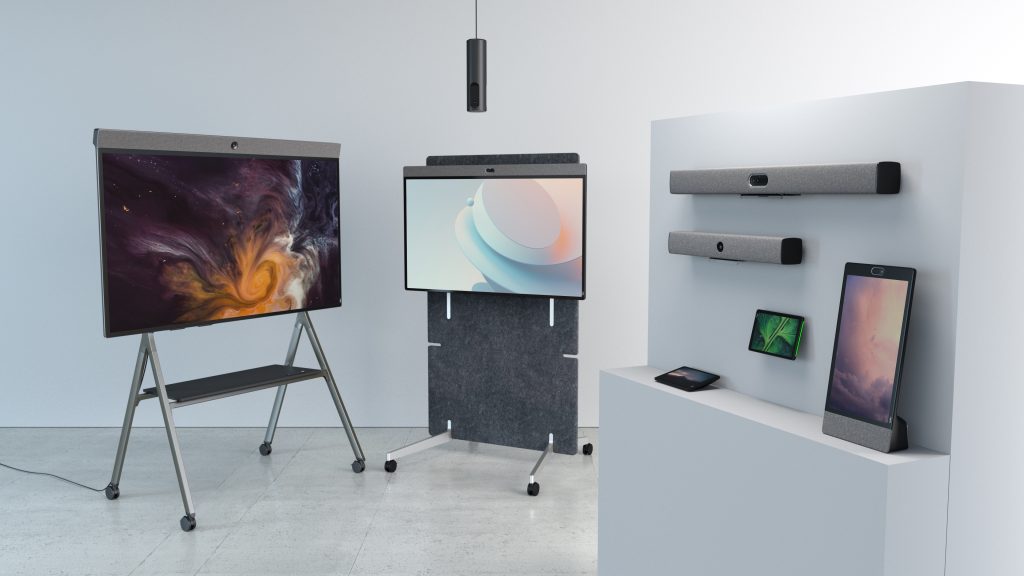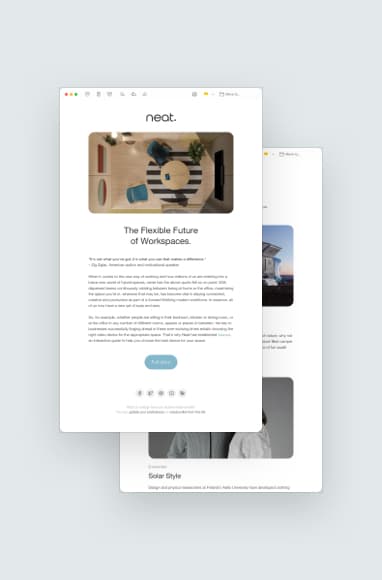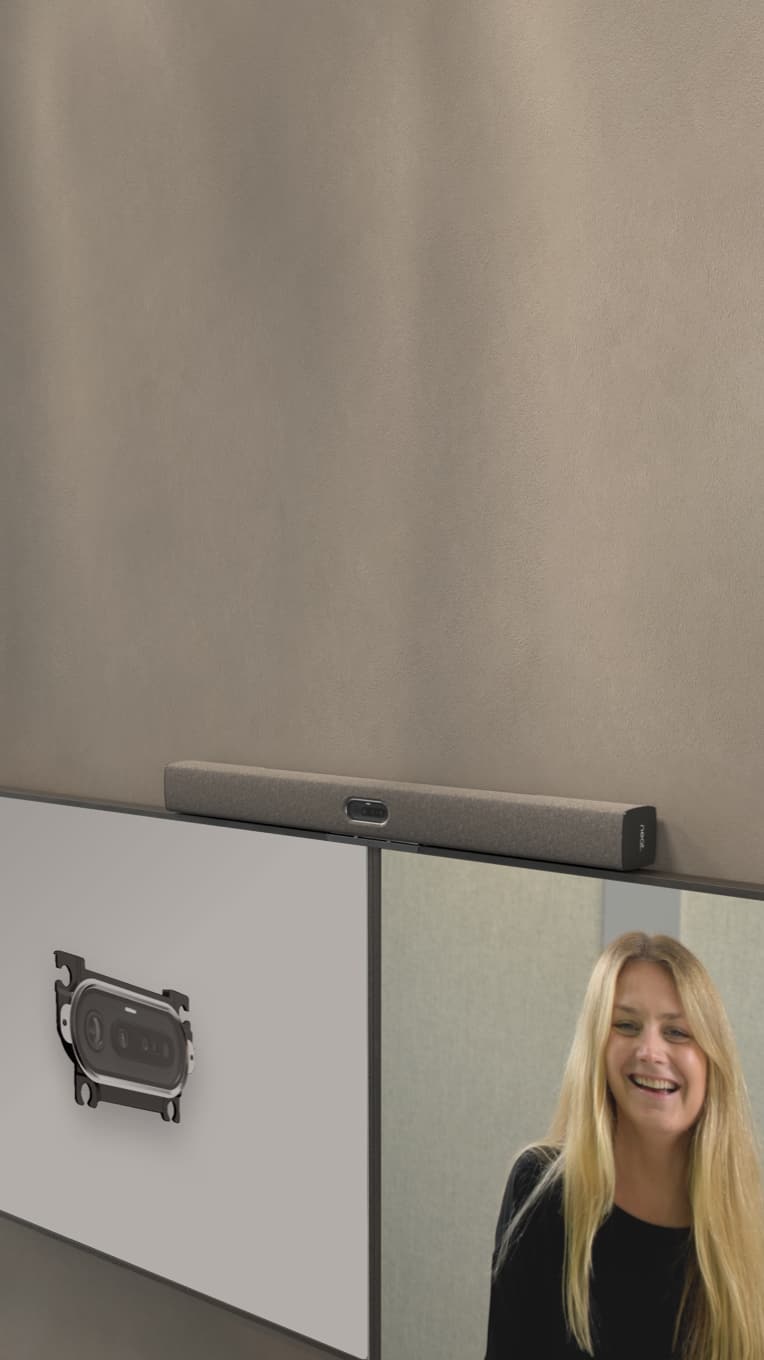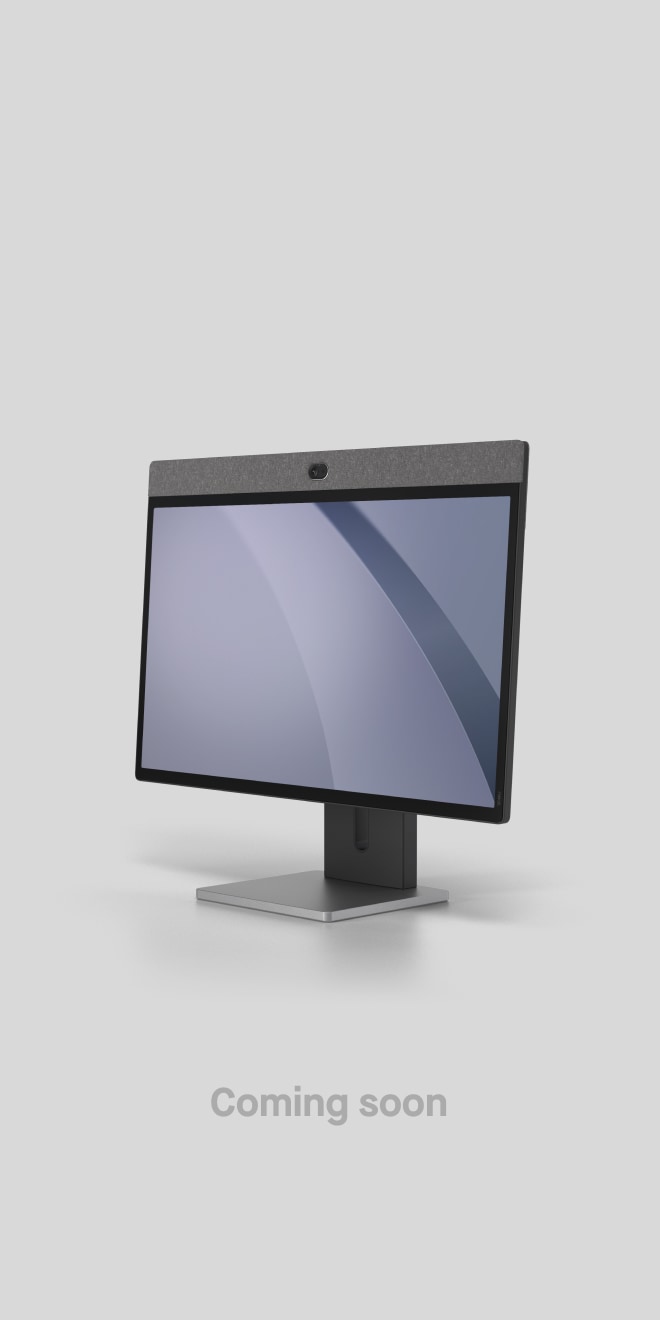BYOD Best Practices: How to Manage Devices in Your Workplace
Neat, Jul 29, 2025

Key takeaways
- Implementing Bring Your Own Device (BYOD) policies requires careful planning, robust security protocols, and employee training.
- Best practices include strong access controls, regular updates, clear usage policies, and separation of personal and corporate data.
- Devices like Neat Bar and Neat Bar Generation 2 in BYOD mode enable seamless, secure collaboration while simplifying IT and BYOD management.
The shift toward flexible and hybrid work has made BYOD a popular workplace strategy. Allowing employees to use their own smartphones, tablets, and laptops for work boosts convenience, reduces IT costs, and increases employee satisfaction. However, without a strong framework, BYOD can introduce security, compliance, and support challenges.
To strike the right balance, organizations should follow clear BYOD best practices – guidelines that promote flexibility while protecting data, ensuring network integrity, and respecting employee privacy. This blog explores how to successfully manage BYOD in your workplace through effective policies and supportive technology.
1. Establish a clear and comprehensive BYOD policy
A strong BYOD program begins with a well-defined policy. This should outline acceptable use, supported devices and operating systems, data security expectations, and user responsibilities. It should also cover liability, reimbursement (if applicable), and the process for onboarding and offboarding devices.
Clarity is essential. According to Unduit, employees need to understand what data employers can access, what monitoring tools are used, and how company data will be removed from devices upon exit. Transparency builds trust and encourages compliance with BYOD best practices.
2. Enforce security through MDM and EMM solutions
Mobile Device Management (MDM) and Enterprise Mobility Management (EMM) solutions are critical to BYOD management. These tools allow IT teams to enforce encryption, mandate strong passwords, install security patches, restrict app use, and remotely wipe corporate data.
As noted by Acroname, security breaches are one of the top BYOD risks. Organizations must deploy full-disk encryption, anti-malware software, and regular audits. MDM should focus on protecting work-related data while respecting personal content.
3. Use multi-factor authentication and SSO
Multi-Factor Authentication (MFA) and Single Sign-On (SSO) ensure only authorized users access sensitive systems. These methods protect against compromised credentials and simplify secure access across multiple platforms and applications.
4. Segment networks and monitor access
Personal devices should operate on segmented Wi-Fi networks to protect sensitive company systems. Virtual Local Area Networks VLANs) and Network Access Controls (NAC) help isolate BYOD traffic, while monitoring tools detect suspicious activity.
Neat devices, including Neat Bar in BYOD or Neat Select mode, integrate seamlessly with segmented networks. They help maintain workplace security while offering high-quality collaboration experiences.
5. Train employees and promote awareness
User education is essential to a successful BYOD strategy. Employees should be trained on phishing awareness, safe browsing, secure app use, and company protocols.
As AIM Digital emphasizes, security depends on informed users. Training should cover incident reporting, lost device procedures, and the importance of separating work and personal data.
6. Separate work and personal data
Organizations should use containerization or enterprise apps to isolate business data from personal content. This improves security and respects privacy.
Managed profiles can restrict permissions and allow IT to wipe work-related data only, preserving user-owned content like photos or personal apps.
7. Choose BYOD-friendly collaboration tools
Success in BYOD environments depends on intuitive, cloud-based, and platform-agnostic tools. These reduce compatibility issues and empower employees to collaborate smoothly.
Neat’s video collaboration devices are ideal for BYOD. Neat Select and BYOD-only modes allow users to connect laptops via HDMI or USB-C and access professional-grade video and audio – regardless of conferencing platform.
Neat Pulse lets IT manage devices centrally, deploy updates, track analytics, and ensure compliance without accessing personal devices.
8. Monitor, adapt, and improve continuously
A BYOD strategy must evolve. Organizations should regularly review policies, update security measures, and gather employee feedback. Threats change – so should your approach.
With Neat Pulse, IT teams gain insights into usage patterns and performance, enabling continuous optimization. Monitoring device compliance helps ensure ongoing success.
9. Legal and compliance considerations
BYOD strategies must align with regulations like GDPR, HIPAA, and other regional laws. This includes managing user consent, defining access levels, and maintaining audit trails.
The UK’s National Cyber Security Centre (NCSC) emphasizes that BYOD solutions must enable monitoring and auditing without compromising personal privacy. Clear policies should guide data retention, breach response, and employee offboarding (NCSC).
10. Choosing the right devices for BYOD
Employees should use devices with secure OS versions, biometric authentication, and reliable hardware. Compatibility with collaboration tools is essential.
Neat’s hardware supports a wide range of modern laptops, ensuring users can connect easily while enjoying top-tier conferencing quality.
11. BYOD for remote and international teams
For distributed teams, BYOD offers speed and flexibility. Employees in different regions can start working immediately without waiting for equipment. However, consistent policies and secure cloud tools are vital.
Neat’s platform-agnostic devices and secure conferencing support ensure uniform collaboration experiences across borders.
12. Metrics for measuring BYOD success
Organizations should track performance indicators to evaluate BYOD effectiveness. Key metrics include:
- Device compliance rates
- Volume of support requests
- Number of incidents or breaches
- Employee satisfaction with flexibility and tools
Tracking these KPIs helps optimize training, improve security, and assess the ROI of tools like Neat. It’s simple too, with a number of great employee feedback tools and apps readily available to support the process.
How Neat video meeting devices support BYOD
Neat video collaboration devices are built for the modern BYOD workplace. In BYOD-only or Neat Select mode, Neat Bar and Neat Bar Generation 2 allow users to connect laptops and access advanced video and audio features – without installing software.
This plug-and-play model supports secure, cross-platform meetings. Users simply connect and collaborate using Zoom, Teams, or Google Meet.
Neat Pulse reduces IT complexity by offering centralized device management, analytics, and policy enforcement. This enhances the user experience while supporting a secure and scalable BYOD framework.

Conclusion
BYOD is now a standard workplace strategy, not just a trend. With the right policies, training, and tools – such as Neat’s BYOD-ready devices – organizations can achieve the perfect balance between flexibility and control.
Why not book a demo and experience Neat devices for yourself?
Sources
- Guide to BYOD with Pros and Cons, Unduit.
- Neat Empowers You with Neat Select, Our New BYOD Solution, Neat.
- Neat Bar as a BYOD-Only Solution Is Now Generally Available, Neat.
- Bring Your Own Device: 10 Advantages and Disadvantages of BYOD, Acroname.
- Pros and Cons of BYOD, A.I.M. Digital Limited.
- Bring Your Own Device (BYOD) Guidance, National Cyber Security Centre.
- 25 Best employee feedback tools and apps in 2025, Culture Monkey.






